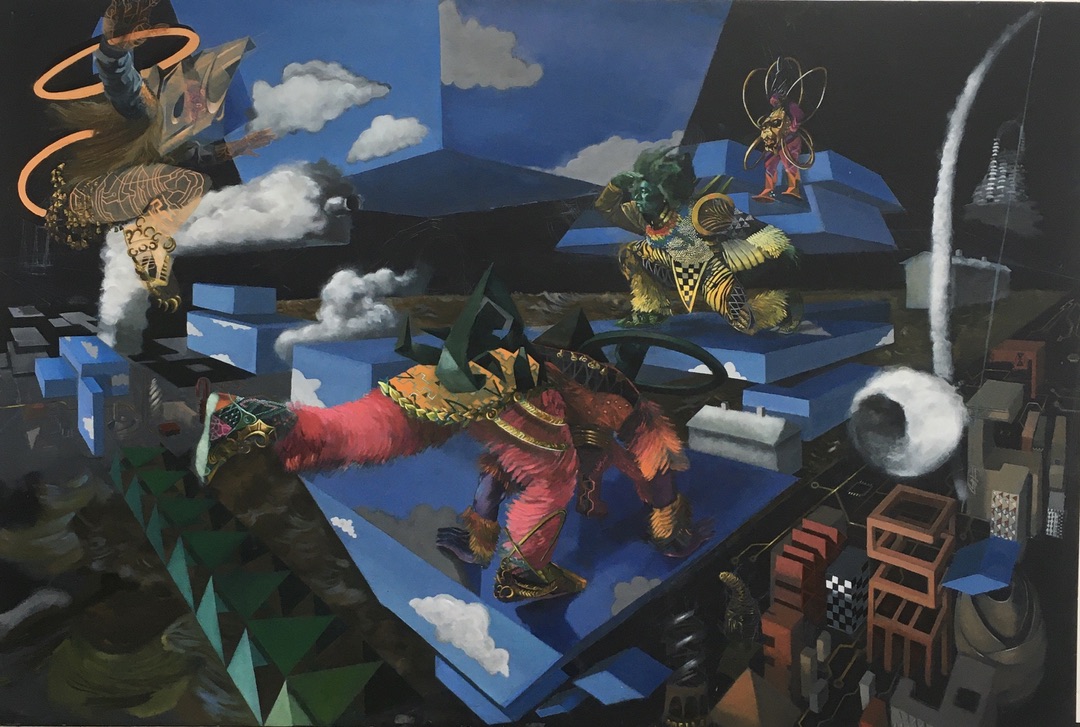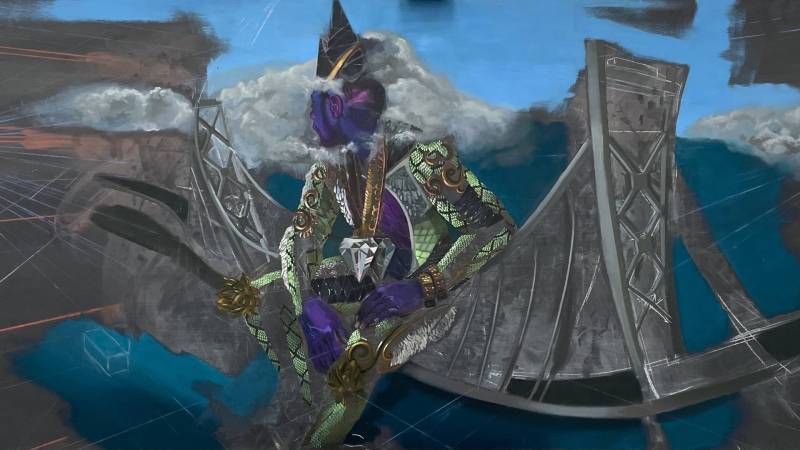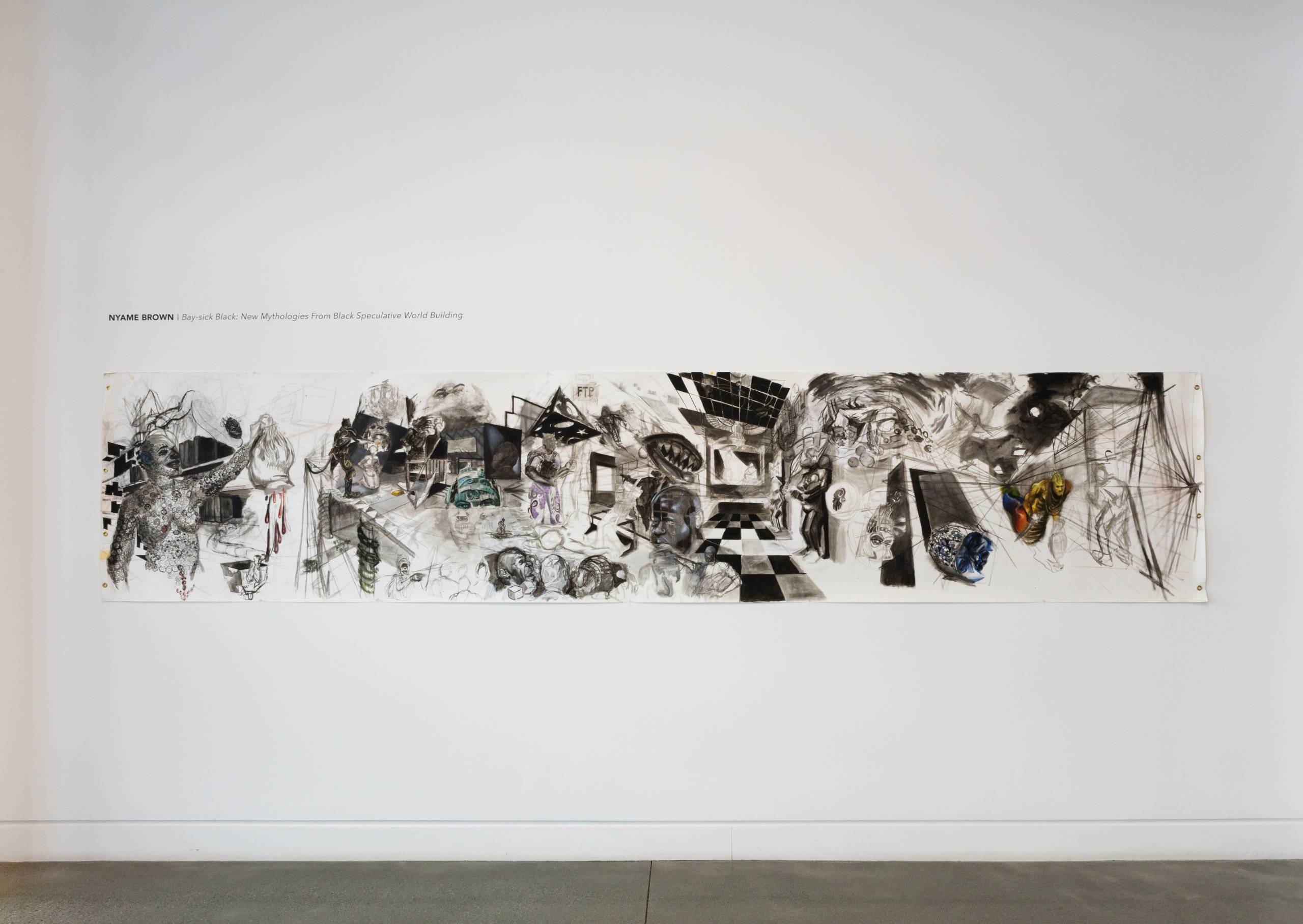If Black Panther is your favorite hero of the Marvel Cinematic Universe and the movies left you wanting so much more, there’s a San Francisco exhibition that will interest you. On view through June 9 at the California Institute of Integral Studies (CIIS), Bay-Sick: New Mythologies from Black Speculative Worldbuilding invites us to witness Oakland artist Nyame Brown’s dimension-expanding practice. Working with diverse media, including cut paper and oil paint applied to blackboards, Brown riffs off of African American folklore tradition to build worlds in which fantasy and reality coexist.
Brown identifies his work as part of Afrofuturism, a cultural aesthetic that combines literature (particularly science fiction and speculative fiction), history and fantasy to explore African American experience, and connects African diasporan communities to ancestral traditions that were violently interrupted by the Atlantic slave trade. N.K. Jemisin and the late Octavia Butler are luminary Afrofuturst novelists; Sun Ra and George Clinton came at the movement musically.
In contemporary art, Wangechi Mutu is a standard-bearer. Her installation I’m Speaking, Are You Listening? transformed the Legion of Honor in 2021, and made the journey to San Francisco’s windy edge worthwhile. Within this lineage, Brown proposes different ways to think of Black history as a shared experience, and puts forth possible futures equally shaped by both similarities and dynamic differences.

At CIIS, curator Kija Lucas has selected pieces that reflect Brown’s varied practice. In addition to watercolor works on paper, the show includes oil paintings on chalkboards. It’s a nod to Brown’s tenure as an Oakland School for the Arts educator. His use of oil paint, as opposed to chalk, suggests a hope for a time in which Black lives and Black history are not so easily erased.
An example of this style, Galo Canto (2022), registers the influence of contemporary fashion and video game design. At the center of the blackboard, one of three vividly costumed figures moves as though gravity and average human mobility are of no concern. Gamers may appreciate what look like interlocking platforms, a familiar visual trope in virtual world-building, that in Brown’s work suggest a precariousness the figures gracefully navigate.




